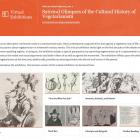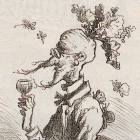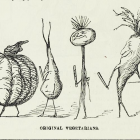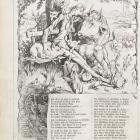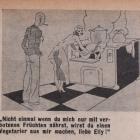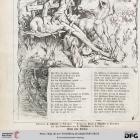Introduction
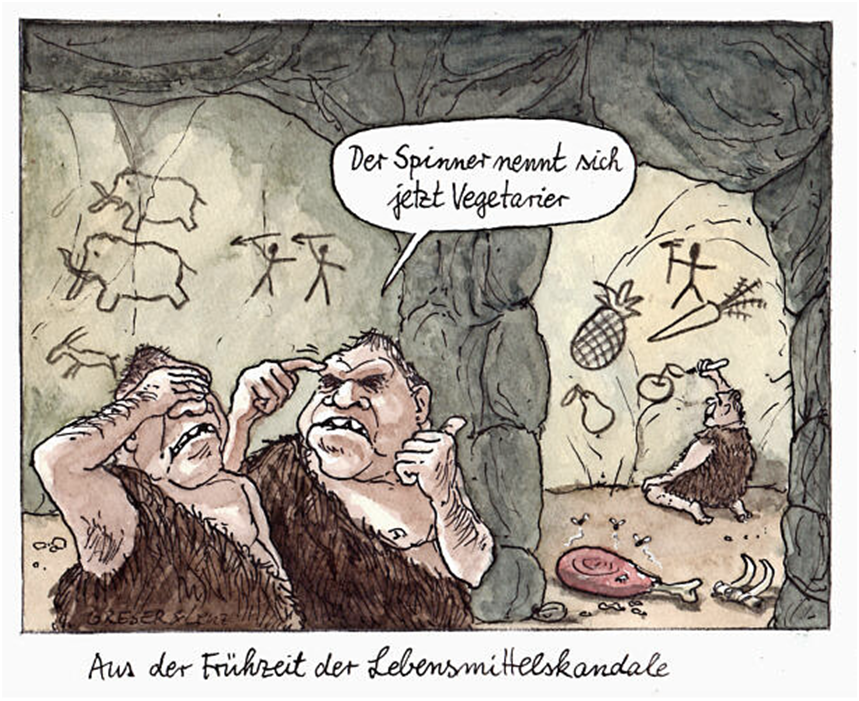
Aus der Frühzeit der Lebensmittelskandale (At the dawn of food scandals). Greser & Lenz, 2011. “Der Spinner nennt sich jetzt Vegetarier” (“Now the weirdo is calling himself a vegetarian”).
Aus der Frühzeit der Lebensmittelskandale (At the dawn of food scandals). Greser & Lenz, 2011. “Der Spinner nennt sich jetzt Vegetarier” (“Now the weirdo is calling himself a vegetarian”).
© Achim Greser and Heribert Lenz.
von Greser & Lenz für die F.A.Z.
Used by permission.
The copyright holder reserves, or holds for their own use, all the rights provided by copyright law, such as distribution, performance, and creation of derivative works.
In the present, as vegetarianism is becoming more and more accepted as an alternative global nutrition model, this cartoon imagines how uncomprehending primitive people would have reacted to the decision of their contemporaries to voluntarily forego animal meat and instead pay homage to vegetables and fruits. At the same time, of course, it implies that the critics of vegetarianism are culturally backward. This cartoon is a particularly apt prelude to our exhibition, firstly because it playfully and speculatively looks back to the (supposed) historical beginnings of vegetarianism, and secondly because it reflects on the idea that those practicing this emerging vegetarianism are developing a repertoire of terms and symbols to create a verbal and visual discourse for the purpose of communicating about their new way of life.
Today, the word “vegetarian” hardly needs any further explanation and is broadly understood simply as a synonym for a meatless diet, even if there are conceptual variants, e.g., whether eggs and/or dairy products are excluded, as in a vegan diet. When the adjective “vegetarianisch,” derived from the early-nineteenth-century English word “vegetarian,” became popular in Germany in the mid-nineteenth century and was established in the 1860s by vegetarian societies and magazines, it encompassed much more than abstinence from eating meat for many people—it was about a worldview. Although a vegetable diet was central to the idea of vegetarianism from the beginning, there were very different views of what a “vegetarian way of life” should include or exclude.
Since antiquity, written sources tell us about humans’ preoccupation with their food cultures and list a variety of reasons for or against meat consumption ranging from religious to health considerations, from animal ethics to economic concerns. All the while, the firm belief that humans need meat was contrasted by an equally firm belief that the opposite was true. Movements that propagate a meatless diet have been around at least since Pythagoras asked his followers to abstain from meat in the sixth century BCE. Since the mid-nineteenth century, vegetarianism and veganism have attracted public attention and provoked controversial discussions in Europe. In the era of industrialization, the meat consumption of the bourgeois (and especially male) population increased rapidly and reached a peak between 1900 and the First World War, which was only surpassed in the middle of the twentieth century in the wake of post-war economic recovery. The emergence of vegetarianism in the nineteenth century can be understood as a countermovement to the advancement of industrialization, which, in the eyes of vegetarians, had led to an alienation from nature as well as to physical and moral decay.
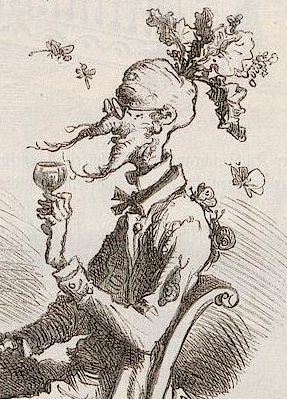
Detail of the caricature Der Vegetarianer (The vegetarian) by Edmund Harburger (1846–1906), 1879.
Detail of the caricature Der Vegetarianer (The vegetarian) by Edmund Harburger (1846–1906), 1879.
Courtesy of Universitätsbibliothek Heidelberg. Originally published in Fliegende Blätter 70, no. 1745–1770 (1879): 135.
Click here to view source.
 Dieses Werk ist lizenziert unter einer Creative Commons Namensnennung - Weitergabe unter gleichen Bedingungen 3.0 Deutschland Lizenz.
Dieses Werk ist lizenziert unter einer Creative Commons Namensnennung - Weitergabe unter gleichen Bedingungen 3.0 Deutschland Lizenz.
Our exhibition sheds light on the beginnings of the debates on meatless nutrition in German-speaking areas and shows how various positions and arguments have developed. Rather than relying primarily on text sources, it focuses on caricatures published in German-language satirical magazines between the foundation of the first vegetarian society in 1867 and the Second World War. The exhibition thus chooses a special perspective: it traces the development of the discourse on vegetarianism in verbo-visual caricatures, satirical drawings, and poems that mock the movement, its worldview, social structures, and eating habits.
Caricatures and other forms of satire respond directly to current events and developments. Historical caricatures tell us what was perceived as new, strange, and worthy of criticism at the time of their publication, and why. However, the reconstruction of social phenomena from their satirical distortions is challenging. Where it succeeds, the caricatures illuminate the cultural history of early vegetarianism. The excerpts of caricatures shown here in this introduction are discussed in more detail in separate chapters that introduce various verbal and visual arguments against vegetarianism.
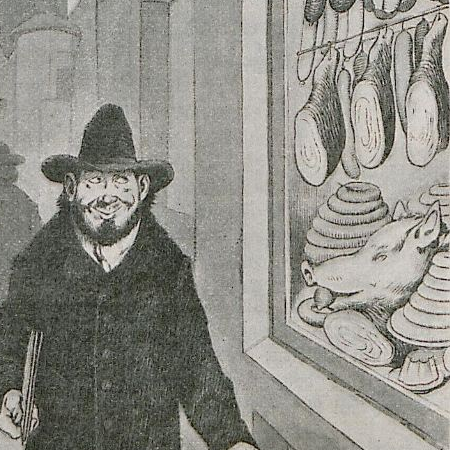
Detail of the caricature Zu streng (Too strict) by Hermann Schlittgen (1859–1930), 1894.
Detail of the caricature Zu streng (Too strict) by Hermann Schlittgen (1859–1930), 1894.
Courtesy of Universitätsbibliothek Heidelberg. Originally published in Fliegende Blätter 101, no. 2553–2578 (1894): 221.
Click here to view source.
 Dieses Werk ist lizenziert unter einer Creative Commons Namensnennung - Weitergabe unter gleichen Bedingungen 3.0 Deutschland Lizenz.
Dieses Werk ist lizenziert unter einer Creative Commons Namensnennung - Weitergabe unter gleichen Bedingungen 3.0 Deutschland Lizenz.
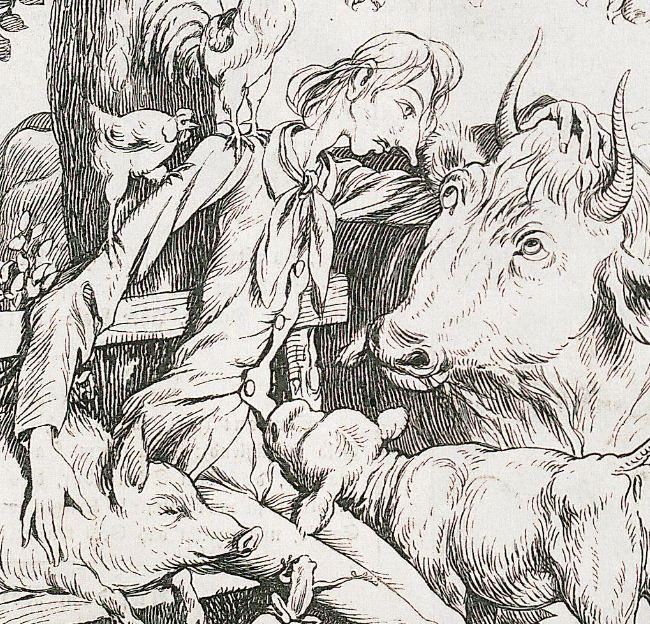
Detail of the caricature Vegetarianer-Poesie (A vegetarian’s poetry) by Adolf Oberländer (1845–1923), 1886.
Detail of the caricature Vegetarianer-Poesie (A vegetarian’s poetry) by Adolf Oberländer (1845–1923), 1886.
Courtesy of Universitätsbibliothek Heidelberg. Originally published in Fliegende Blätter 84, no. 2110–2135 (1886): 24.
Click here to view source.
 Dieses Werk ist lizenziert unter einer Creative Commons Namensnennung - Weitergabe unter gleichen Bedingungen 3.0 Deutschland Lizenz.
Dieses Werk ist lizenziert unter einer Creative Commons Namensnennung - Weitergabe unter gleichen Bedingungen 3.0 Deutschland Lizenz.
Regrettably, historians often treat caricatures as mere illustrations and evidence of historical events. On the contrary, they are a unique pictorial medium of cultural criticism that inventively reveals problematic developments and imagines alternatives by combining text and image, and as such, they certainly deserve more attention. As a concept and pictorial technique, caricature was already well known by the mid-nineteenth century. In the Brockhaus encyclopedia, caricature is defined as a “picture of mockery or deformation” in which characteristics of the depicted subject are exaggerated (Brockhaus 1843, 201). “The task of satire is to radically expose the futile efforts, the prevalent foolishness, and the vices of one’s time, especially the social conditions of particular nations and classes” (Brockhaus 1847, 558). As the opposite of the norm or of an ideal, the depicted persons or social phenomena seem ridiculous, although not all satire provokes laughter. Even if it uses wit to attract attention, its main goal is to make people think about the problem it displays. This also means that caricatures are not “politically correct” and that one can not measure their moral horizon by today’s standards. This exhibition features historical artifacts that do not reflect the worldview of the curators. Furthermore, caricatures cannot be understood and decoded without knowing their horizon of reference, i.e. the sociopolitical conditions surrounding their publication. These can only be roughly outlined in our exhibition. Nevertheless, the cartoons tell us a lot about the food culture at their time of origin, about what caused irritation, what could—or could not—be tolerated and last, but not least, about the humor of their time.
Some of the verbal and visual arguments in favor of or against vegetarianism found in historical cartoons are still widely circulated and discussed today—with great controversy. With the establishment of social media, debates about healthy and ethical diets have skyrocketed in the twenty-first century. What is new in comparison to the previous discussions is that the proponents of a meatless diet now also argue that factory farming is driving global warming. While the largest meat companies are responsible for higher CO2 emissions than the oil industry, public pressure to reduce emissions is nonetheless more focused on energy and transportation sectors. In fact, the global per capita meat consumption is steadily increasing and the meat industry seems to be growing undisturbed (GRAIN 2018). Today’s cartoonists, of course, humorously attack such grievances. The causal relationship between the meat industry and climate change opens up a new scope for visual satire, which would be a worthy exhibition focus on its own.
- Previous chapter
- Next chapter




